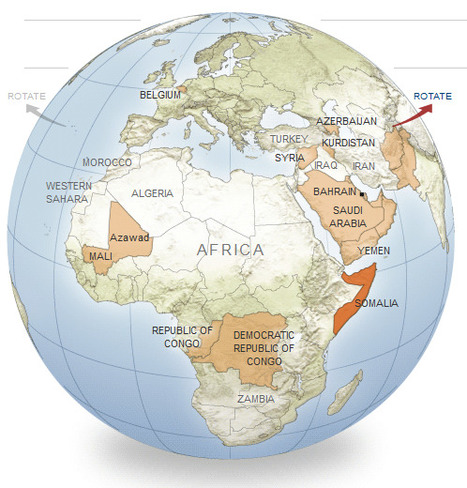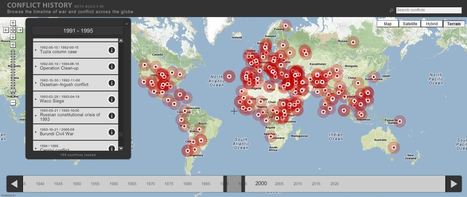An interactive series of maps show possible new additions to the world’s list of independent nations.
This is great way to show examples of devolution and political instability. Included are 11 potential scenarios where further fragmentation/disintegration might occur or even greater regional integration that would redraw the map. These case studies include: Somalia, Korea, Azerbaijan, Belgium and the Arabian Gulf Union.
Tags: political, devolution, supranationalism, war, autonomy, unit 4 political.



 Your new post is loading...
Your new post is loading...












This article is probably one of my favorites I have read so far. It describes perfectly the political instability still present in the world, and that the globe and its boundaries are constantly changing, never staying put for too long. It surprised me at the new borders which most likely are going to happen, such as the unification of parts of Pakistan and Afghanistan. Also, the fact that South Korea is subtly getting ready for the reunification of North and South Korea. Also, there may be devolution in Mali and splintering devolution in the Congo's.
This shows devolution as the power in these nations in which are breaking up, such as Belgium and the Flemish peoples. It shows the centrifugal forces behind the breakup of nations, such as ethnicities which vary, or the centripetal forces which bring nations together such as the combination of South and North Korea.
Devolution/Fragmentation
This article is about nations that could become potentially independent in the near Future, whether due to chronic ethnic incoherence, redrawn governemnt policies, or a growing stateless nation group. Some examples given are an independent Khurdistan, a larger Azerbaijan, and the split of Belgium.
Centrifugal forces are the root of conflict in many countries. These forces include ethnic variety, lack of common language, political instability. These are what may be causing a split in both Belgium (developed country) and Somalia (developing country). There may also be a unification of countries—the map gives an example of the Saudia Arabia, Oman, Yemen, Bahrain, and other melding into one Arabian Gulf Union, of China absorbing Siberia. This does not necessarily herald the presence of centripetal forces, as these countries may be the result of military conquest.